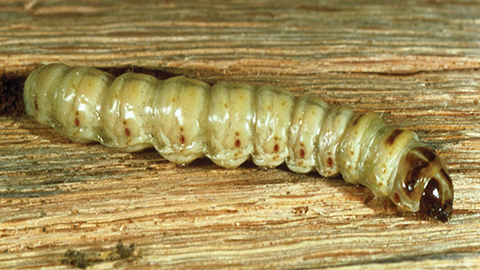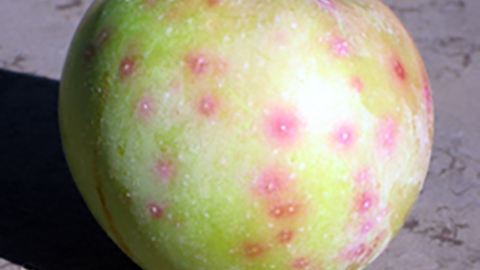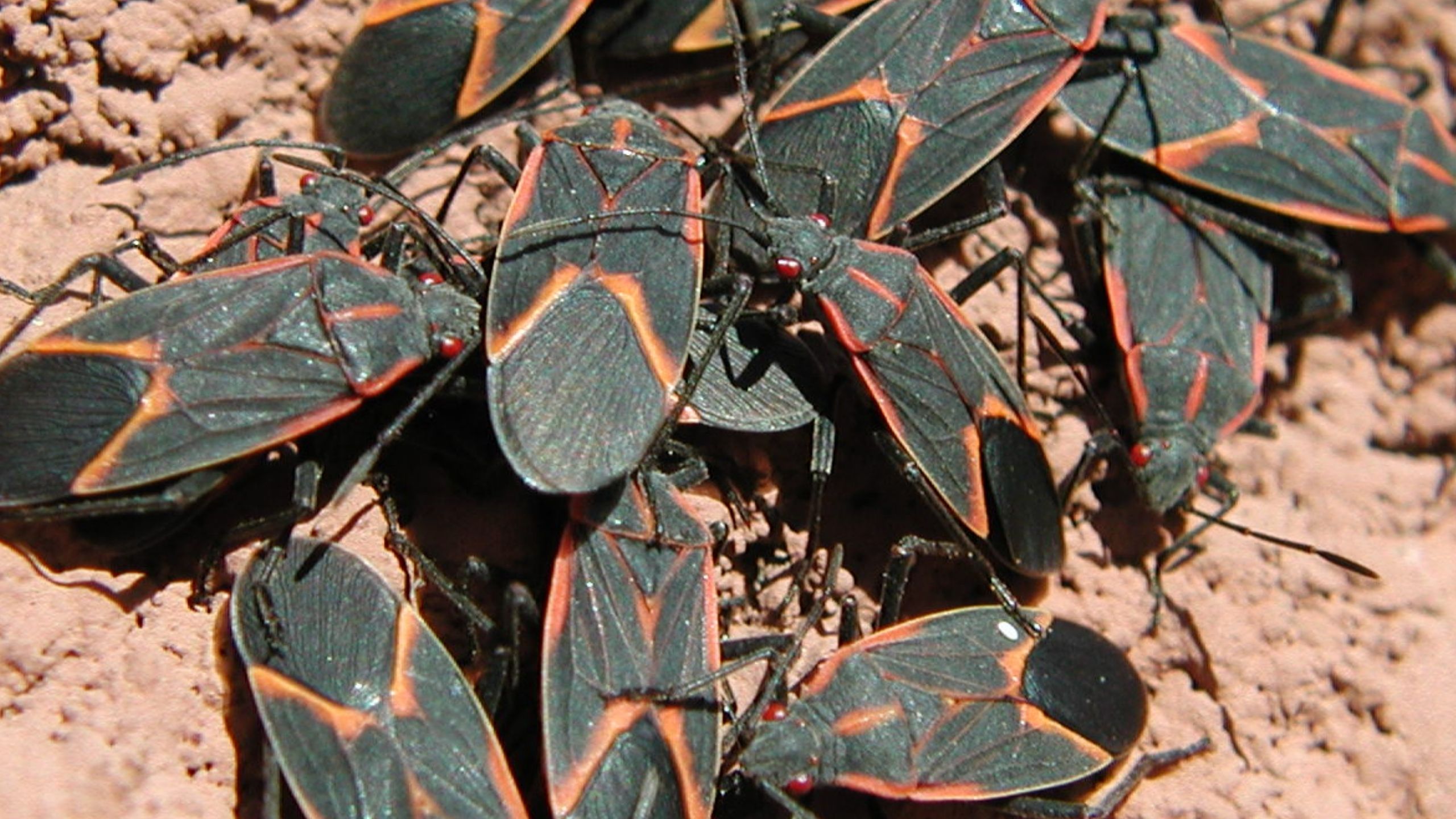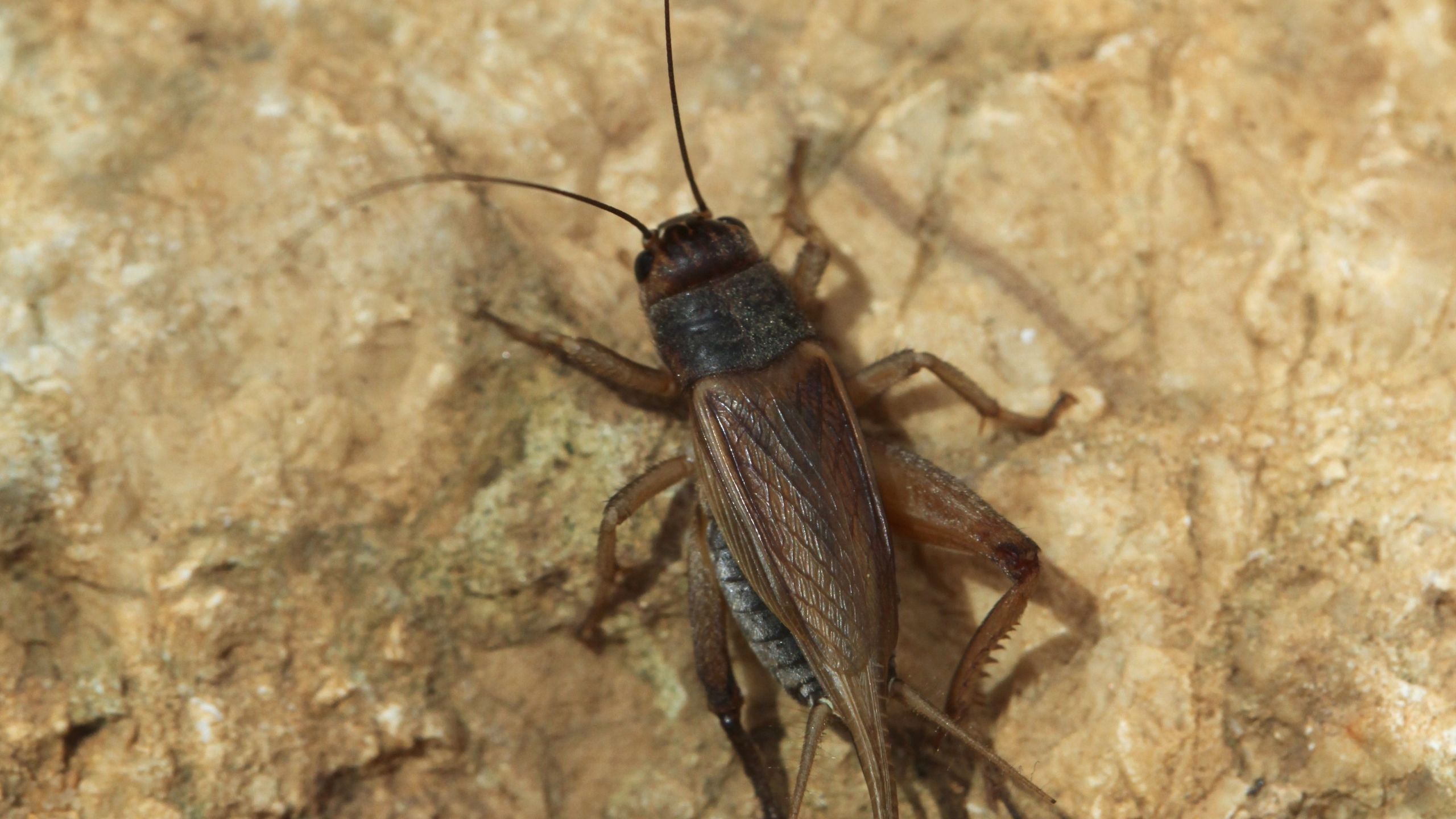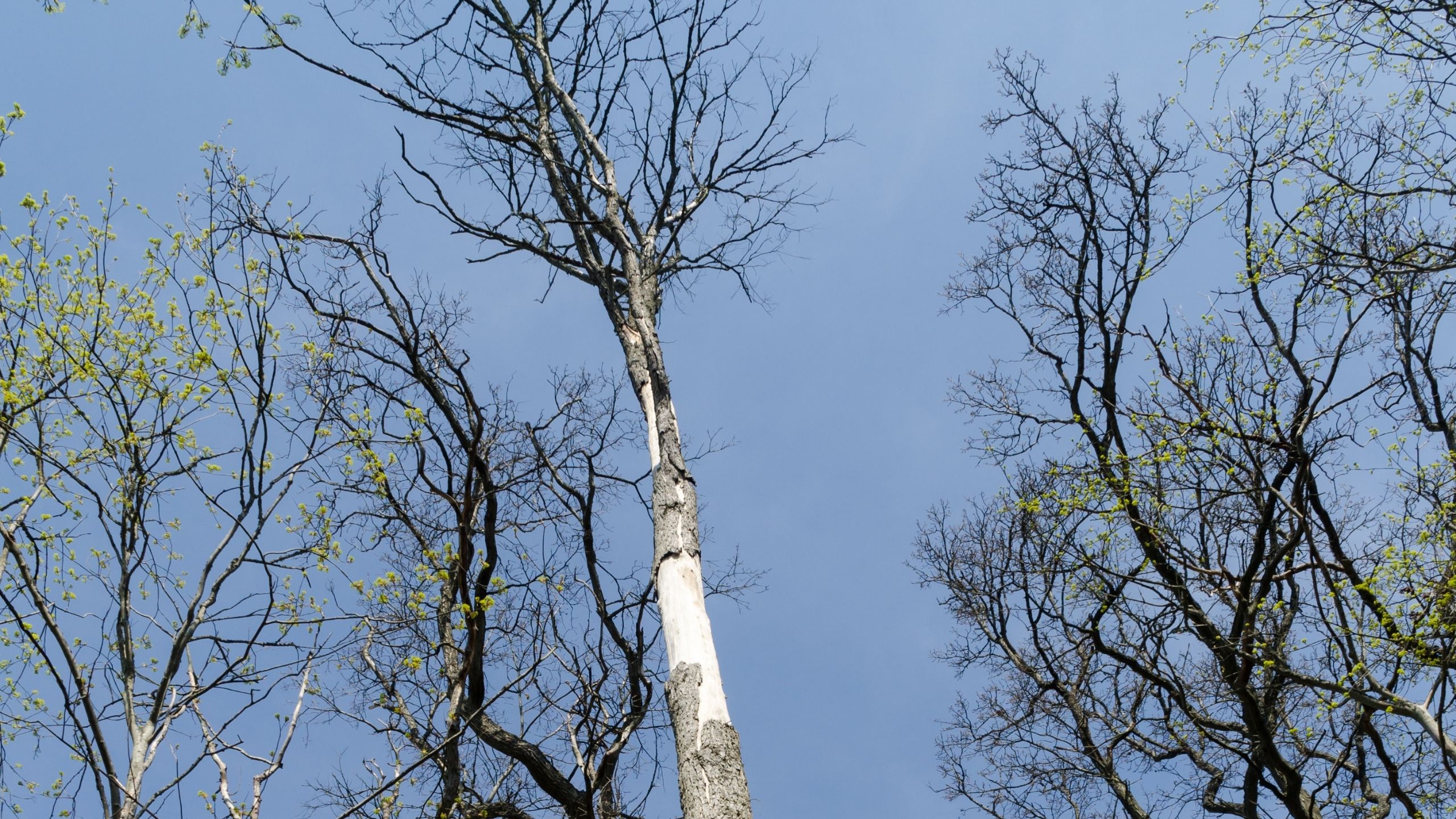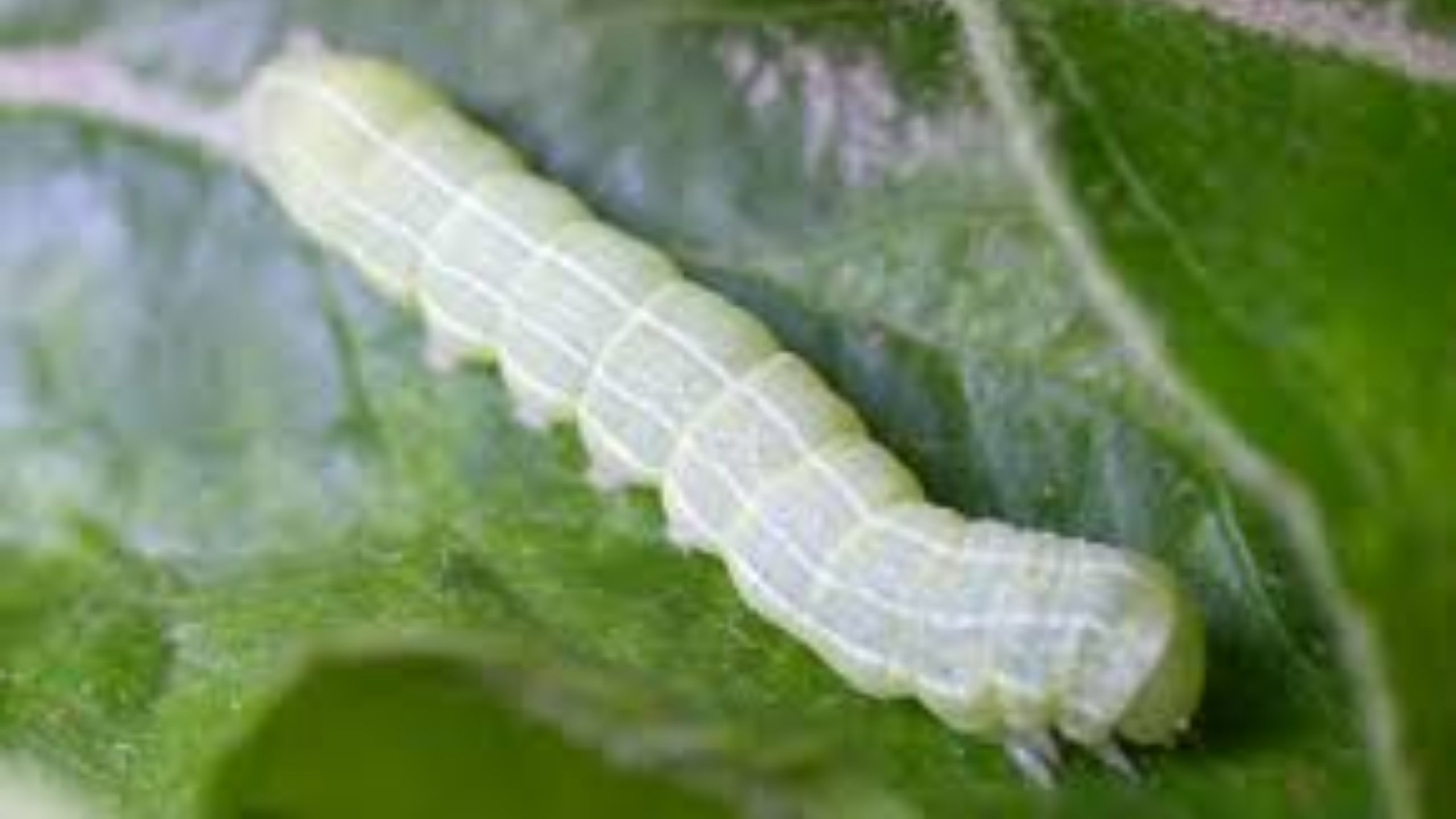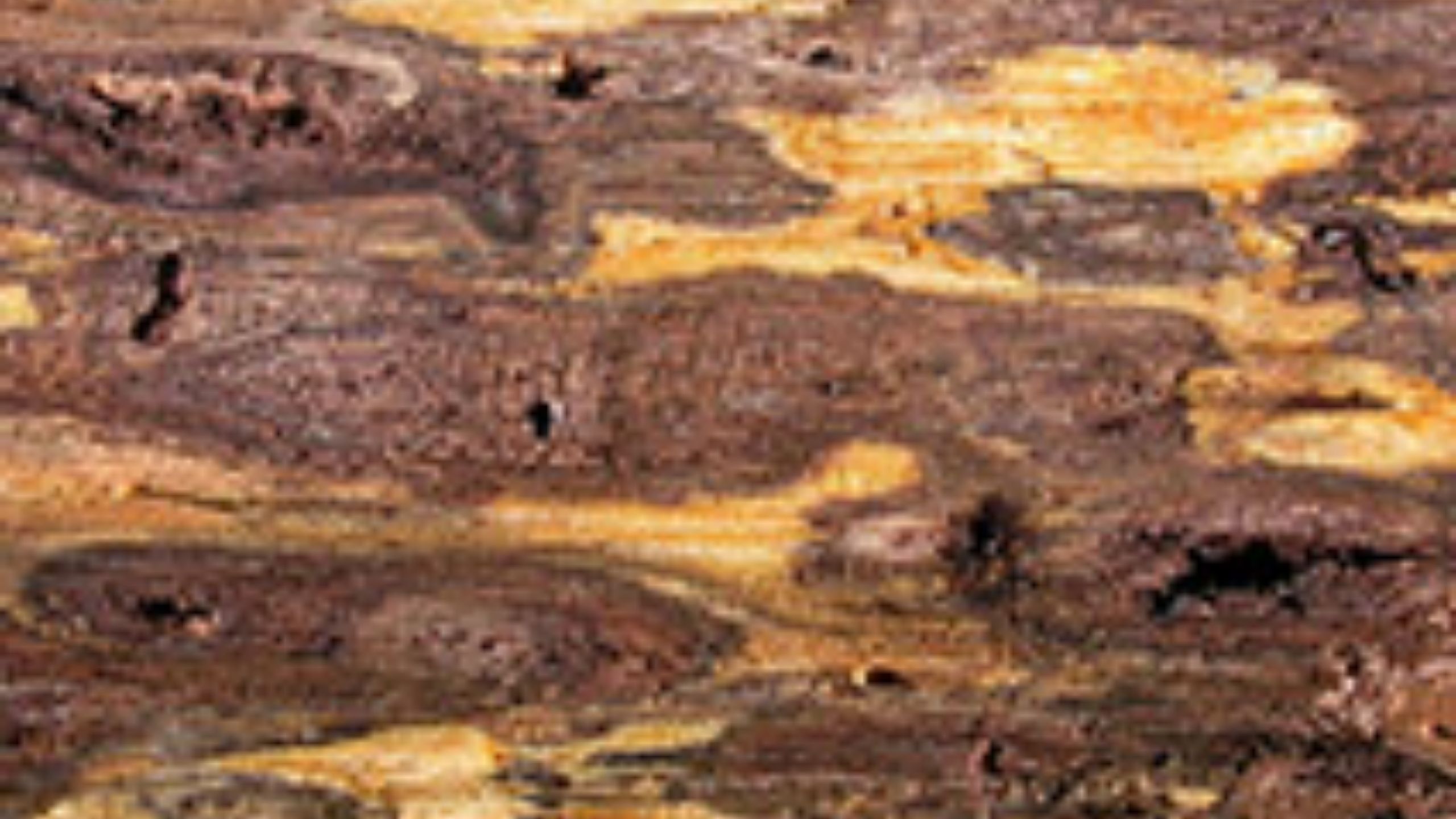Sycamore Scale
June 2021
Marion Murray, IPM Project Leader and Ryan Davis, Forest Entomologist, U.S. Forest Service
Quick Facts

- Sycamore scale is a pest of sycamore trees (Platanus spp.), especially London planetree.
- Scale life stages are difficult to see with the naked eye, and therefore, symptoms of leaf damage are often noticed first.
- The primary symptom is yellow-to-brown leaf spots.
- The timing of treatment is at bud break and involves oil application and/or a soil-applied systemic insecticide.
- A fungicide can be mixed with the oil application to treat sycamore anthracnose.
Sycamore scale (Family Steingeliidae, Stomacoccus platani) is a pest of increasing importance on London planetree (Platanus x acerifolia) and California sycamore (P. racemosa) in urbanized areas throughout Utah. It is unknown how susceptible American sycamore (P. occidentalis) is in Utah.
First described from central and southern California, sycamore scale occurs in Arizona, Nevada, New Mexico, and most recently, Utah. It was first identified in Utah by the Utah Plant Pest Diagnostic Lab on London planetree in the St. George area in 2009. The insect has slowly spread northward, with the first identification from Utah County (Pleasant Grove) in 2012, followed by multiple reports in that county and Salt Lake County thereafter. By 2021, the scale was found as far north as Davis County, and it is currently unknown if it occurs farther north.
Insect Biology
The number of generations per year for this insect is unknown in Utah, but observations elsewhere have shown that scale life stages are present on leaves from bud break to leaf fall, and year-round on bark. In California, three to five generations per year are reported (Gill, 1993).
Sycamore scale typically overwinters under bark scales as immatures (Brown & Eads, 1965). They mature to adults in late winter or early spring, and female scales lay masses of 50–100 eggs in white, cottony wax under bark scales of the main stem or smaller branches. At bud break, eggs hatch into the first immature stage, called the crawler. These tiny insects migrate primarily to leaves where they insert their straw-like mouthparts and settle, or they may settle on leaf petioles or thin bark. The insect will develop through three additional immobile, immature stages before molting into an adult. After mating, adult females migrate to the bark to lay eggs, though some summer-generation females will lay eggs near leaf veins. In late summer, multiple life stages can be found due to overlapping generations. See a detailed description of the life cycle and each life stage in Table 1.
| Life Stage | Description | Season | Location |
|---|---|---|---|
| Egg | Yellow-white; 50-100 within white, cottony mass | Spring Summer Fall |
Bark; leaves |
| 1st instar, crawler | < .5mm; yellow-orange/flat; legs and antennae present | Bud break Summer Fall Winter |
Primarily leaves; bark of stem and twigs Primarily leaves; bark of stem and twigs Bark of stem and twigs Not present |
| 1st instar settled | < .5 mm; yellow-orange; oval; egg-like appearance; no legs or antennae | Post-bud break Summer Fall Winter |
After crawlers settle, present primarily on leaves; also on bark of stem and twigs; petioles Primarily leaves; bark of stem and twigs Primarily bark of stem and twigs; leaves Bark of stem and twigs, if present |
| 2nd instar | < .5 mm, slightly larger than 1st instar; yellow-orange; egg-like; no legs/ antennae/eyes; white, waxy filaments may be present |
Spring Summer Fall Winter |
Not present Bark; stem and twigs; petioles; primarily leaves Primarily bark of stems and twigs; leaves Bark of stem and twigs |
| 3rd instar | < .5 mm, slightly larger than 2nd instar; yellow-orange; egg-like; no legs/ antennae/eyes; white, waxy filaments may be present |
Spring Summer Fall Winter |
Not present Primarily leaves; bark of stem, and twigs Primarily bark of stem and twigs; leaves Bark of stem and twigs |
| 4th instar | < .5 mm, slightly larger than 3rd instar; yellow-orange; egg-like; no legs/ antennae/eyes; white, waxy filaments may be present; females may not always have a 4th instar and may mature to adults after 3rd instar |
Spring Summer Fall Winter |
Not present Primarily leaves; bark of trunk, stem, and twigs Primarily bark of stem and twigs; leaves Bark of stem and twigs |
| 5th instar; male prepupa | < .5 mm, slightly larger than 4th instar; yellow-orange; egg-like; no legs/ antennae/eyes; white, waxy filaments may be present; females do not always have a 5th instar |
Spring Summer Fall Winter |
Not present Primarily leaves; bark of trunk, stem, and twigs Primarily bark of stem and twigs; leaves Bark of stem and twigs |
| Male pupa | 1.2 mm long; oblong, white cocoon | Spring Summer Fall Winter |
Not present Primarily leaves; bark of trunk, stem, and twigs Primarily bark of stem and twigs; leaves Bark of stem and twigs |
| Adult female | 1.6 mm long; elongate; deep yellow; no waxy secretion except for egg sac; antennae and legs present; mobile |
Spring Summer Fall Winter |
Bark of stem and twigs Primarily leaves; bark of stem and twigs Primarily bark of stem and twigs; leaves Bark of stem and twigs |
| Adult male | 1.2 mm long; elongate; deep yellow; no waxy secretion; simple eyes; male prepupae are similar in appearance to adult |
Spring Summer Fall Winter |
Bark of stem and twigs Bark; stem and twigs; petioles; primarily leaves Primarily bark of stem and twigs; leaves Bark of stem and twigs |
Identification
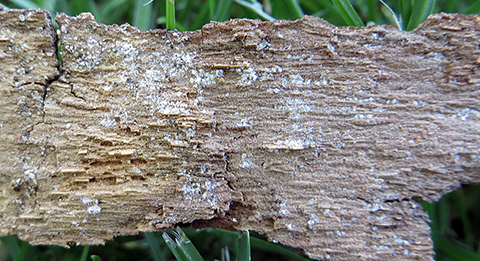


Sycamore scale is one of the smallest scale species, at less than 1/16 of an inch in length. They are so small that the life stages are not visible to the naked eye, even when looking directly at them. Because of this, general identification is primarily based on foliar symptoms and the presence of fluffy white egg masses and residues from the cottony wax and exoskeletons under the bark scales (Figs. 1 and 2).
A hand lens or microscope is needed to view the scales, and in general, most life stages appear as small, yellowto-orange, oval structures. By the time damage is noticed on foliage, it is typical to see empty, oval casings in the middle of the yellow-to-brown spot on the undersides of leaves (Fig. 3).
Newly-hatched crawlers are flattened, oval, and have legs and antennae. As they mature to their second and third instars, they lose their legs, and their body swells to a yellow-to-orange football shape that may be outlined by strands of white, cottony wax. In the fourth stage, the scale “pupates” to an adult inside the exoskeleton of the third instar (Morrison, 1928).
Adults have visible legs and antennae, are larger than nymphs, and are wingless. Both females and males closely resemble immature thrips (Fig. 4). Females are larger than males, have mouthparts, and secrete cottony wax from their hind end (Gill, 1993).
Symptoms
In Utah, we first see damage on newly expanding leaves. At bud break, crawlers that start feeding on the undersides of emerging foliage cause the leaves to become distorted, stunted, and twisted (Fig. 5). These leaves will drop prematurely. Scales that feed on leaves that have already expanded do not cause leaf distortion.
On the foliage where each scale feeds, a small yellow spot forms around the scale body, and this spot is visible on both sides of the leaf. These spots may occur along the leaf vein or randomly throughout the leaf (Figs. 1 and 6). The spots gradually turn brown and die, starting in the center where the scale is feeding. Severely infested leaves will have a gradation of yellow to brown spots and may also drop prematurely.



Scales also feed on the tender bark of limbs and twigs (Brown & Eads, 1965). Although feeding damage in these areas is difficult to assess, the bark may develop a rough texture and shed early. This damage most likely contributes to a reduction in tree vigor.
Foliar damage from sycamore scale may be confused with symptoms of sycamore anthracnose or sycamore plant bug (Figs. 7 and 8a/8b). Anthracnose is a fungal disease that is most active in cool, wet springs, causing leaves to wilt, have blotchy necrosis and random and expanding brown spots, and drop. Damage from sycamore plant bug includes random patterns and sizes of leaf stippling and tattering, and the bugs are visible with the naked eye, feeding on the undersides of leaves.


Management
Monitoring and Decision-Making
No threshold levels have been developed for sycamore scale based on amount of foliar damage or presence of life stages. Therefore, base a treatment decision on the individual tree’s status. Typically, landscape trees can tolerate low to moderate levels of scale infestation, but if left untreated, there is the possibility of increased infestation and loss of tree vigor over time. For this reason, monitoring sycamore bark for signs of scales and foliage for symptoms of scale feeding is important.
In winter and early spring, look for clusters of white, cottony wax in the cracks of bark and beneath bark plates on the trunk and branches. You may need to physically remove a few bark plates to find the signs. Once found, use a hand lens (20x or higher) or microscope and look for eggs (oval to oblong) and nymphs (yellow to whitish spots) within the wax. If sycamore scale eggs and nymphs are abundant, plan for treatment.
Determining scale crawler activity is unnecessary because it coincides with bud break (Fig. 9), but if interested, apply double-sided sticky tape (about ½-inch wide) around twigs in infested areas and examine the tape every few days.
Conduct foliage inspections in spring and summer to determine the effectiveness of the prior treatment or need for treatment the following year. Inspect leaves that are still on the tree rather than on the ground. Look for fresh, partially-damaged foliage which will have the most characteristic symptoms (leaf distortion and leaf spots) and are more likely to have live scales on the underside. Again, use a hand lens or microscope to look for live scale bodies, old exoskeletons, and/or cottony wax.
Natural Enemies
There is very little information about the natural enemies of sycamore scale in the western U.S. The pine ladybird beetle (Exochomus quadripustulatus) was introduced into California in the 1920s and now occurs across California, feeding on many scale species, including sycamore scale (Brown & Eads, 1965). It is unknown if this lady beetle occurs in Utah. Other lady beetle species that do occur in Utah and are likely sycamore scale predators include the twice-stabbed lady beetle (Chilocorus orbus), convergent lady beetle (Hippodamia convergens), and Asian multicolored lady beetle (Harmonia axyridis).
Other potential predators of sycamore scale include syrphid fly larvae (many species in the family Syrphidae), minute pirate bug (Orius spp.), and lacewing larvae (Chrysopa spp.). Based on the authors’ observations of predator-pest interactions, it is unlikely that these natural enemies alone will keep sycamore scale from reaching damaging levels.
Chemical Control

Research by the University of California, Davis (Brown & Eads, 1966; Svihra et al., 1993) showed that thoroughly soaking the expanding leaves, twigs, and trunk with horticultural oil (2–3% rate) at bud break (Fig. 9) is a very effective treatment. This application targets newlyhatched, first-generation crawlers.
The California research showed that the oil reduced scale numbers and unsightly damage throughout the summer. Oil applications made too soon before or too late after bud break were not as effective.
Svihra et al. (1993) also tested oil mixtures with diazinon or malathion and found that the mix did not improve efficacy. However, mixing other insecticides such as pyrethroids may be an option, especially if pests such as aphids or sycamore plant bugs are also targeted at this timing.
Keep in mind that bud break of sycamore trees is not a calendar date but a variable window that depends on local seasonal temperatures. In northern Utah, it ranges from early April into mid-May, depending on location and elevation. Be sure to check the tree buds in question every few days, starting in early to mid-spring, to determine when the buds swell and when leaves start to emerge.
When treating for scale in a sycamore that is also infested with the fungal disease, anthracnose, a fungicide may be mixed with the oil and applied at the same treatment timing.
The owner can treat small backyard trees, but larger trees will require the equipment and expertise of a professional pesticide applicator.
Systemic Insecticides
A systemic insecticide application (such as imidacloprid, dinotefuran, or acephate) is an alternative to a foliar oil application. While there are no data showing the efficacy of systemics, some Utah applicators report that imidacloprid provides control and may be the easiest method for homeowners and professionals to use. Imidacloprid is best applied at bud break, but because it could take six weeks or longer to disperse throughout a tree, feeding damage may still occur from the first generation of sycamore scales, while subsequent generations would be killed. If applying imidacloprid after early summer, it may not adequately disperse throughout the tree to provide control within the same growing season. It is unknown if a summer or fall application of imidacloprid will provide scale control the following season.
Systemics are applied via soil drench, trunk spray, or trunk injection, and the method will depend on the product, label instructions, and the applicator. To properly apply a systemic via a soil drench, remove organic material within a 2-foot zone around the trunk. This includes removing mulch, landscaping fabric, and turf thatch. Water the soil around the tree the night prior to application. Apply the product as a liquid to the soil within 2 feet of the tree trunk using dilutions based on tree diameter at breast height that can be found on the product label. Keep soil moist during this period to allow adequate chemical uptake.
References
- Brown, L. & Eads, C. (1965). A technical study of insects affecting the sycamore tree in southern California. University of California, Davis, Agricultural Experiment Station. Bulletin 818.
- Brown, L. & Eads, C. (1966). Evaluating sycamore scale control with insecticides. Journal of Economic Entomology, 59(3), 520–522. https://doi.org/10.1093/jee/59.3.520 Dreistadt, S. H. (2010). Pest Notes: Sycamore scale [Fact sheet 7409]. University of California Agriculture and Natural Resources Publications.
- Ferris, G. F. (1917). A new genus and species of Coccidae. The Canadian Entomologist, 49(11), 375–378.
- Gill, R. J. (1993). Scale insects of California part 2: The minor families. California Department of Food and Agriculture.
- Morrison, H. (1928). A classification of the higher groups and genera of the coccid family Margarodidae. USDA Technical Bulletin, 52, 57–61.
- Svihra, P., Fouche, C. F., & Koehler, C. S. (1993). Sycamore scale treatments most effective at bud break. California Agriculture 47(3), 10–12.


